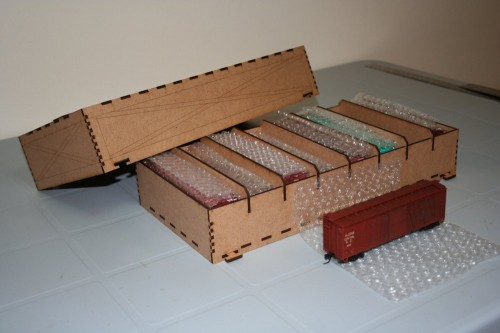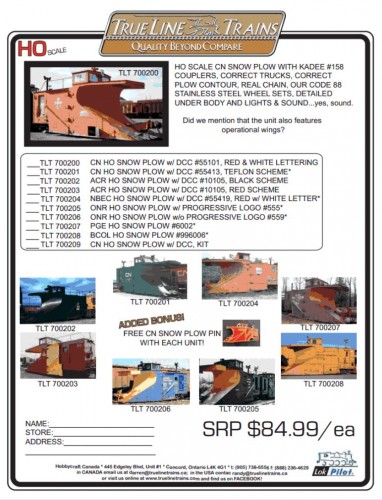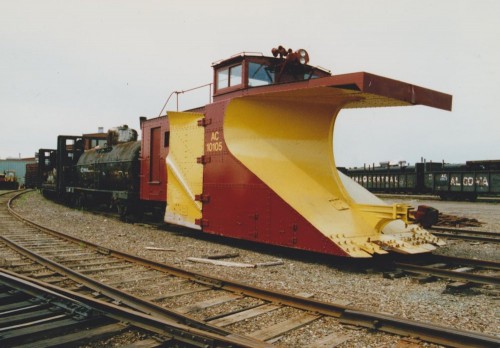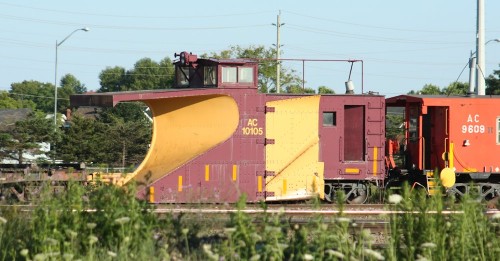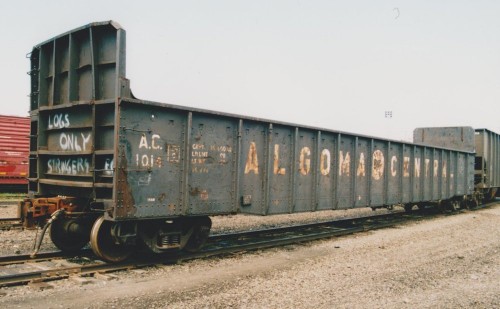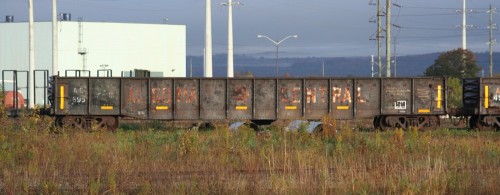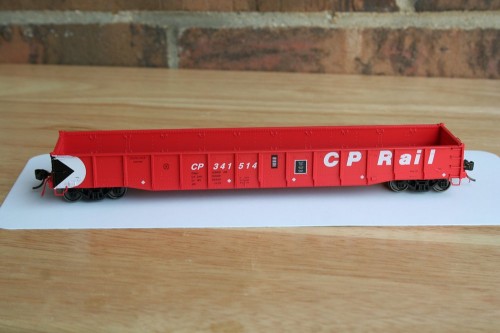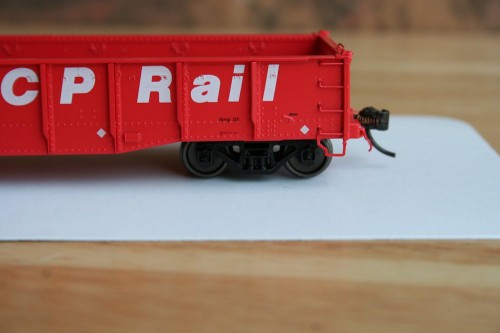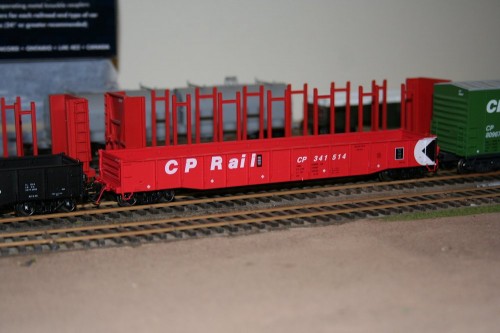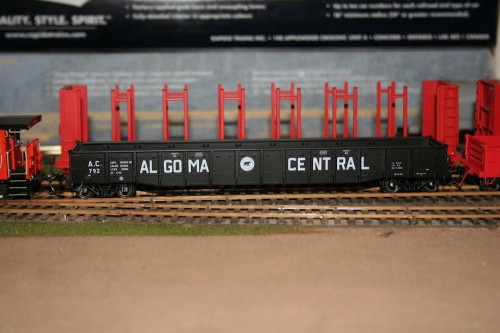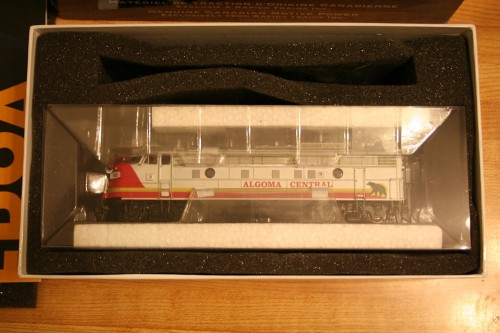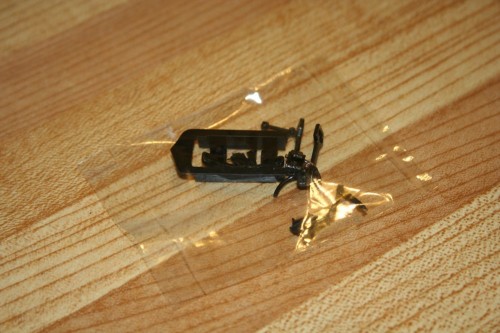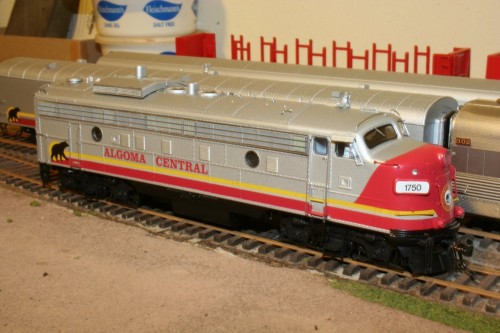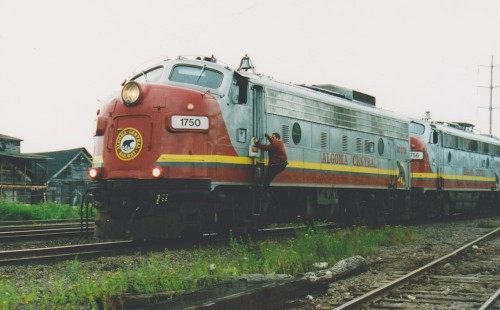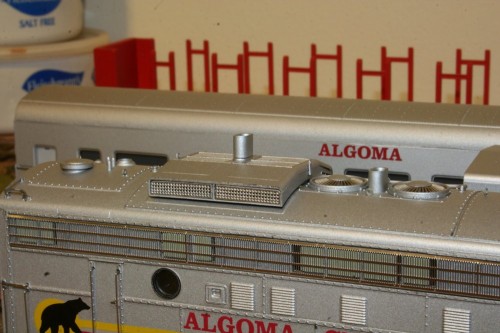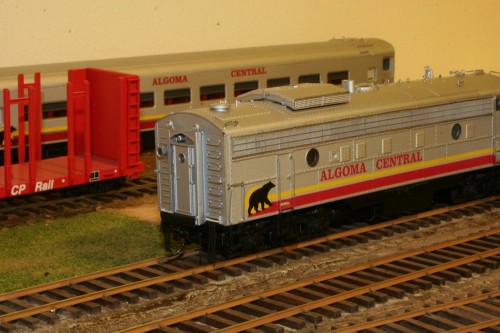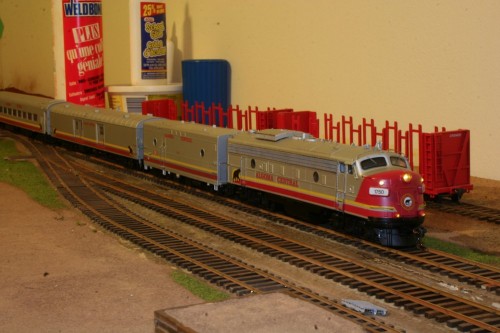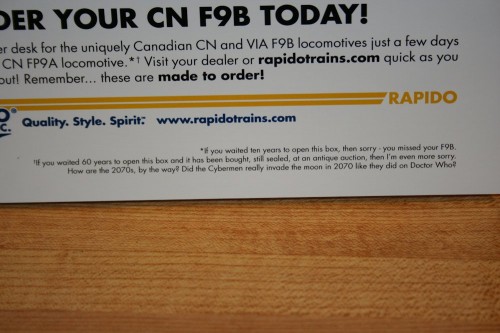A couple of weeks ago I had an email in my inbox advertising the latest product available from FastTracks: a model rolling stock storage/transportation box called the “Freight Crate”. The Freight Crate is manufactured out of laser cut hardboard, and is shipped as an unassembled flat kit, to be put together by the modeller. They’re available in a few different sizes for different sized equipment (standard 40′, 65′ and 90′ lengths, and extra-deep versions of the same three sizes for taller cars) and the HO scale versions each hold 8 pieces of equipment.
With a lot of modern Ready-to-Run equipment, the existing packaging really holds and protects the cars quite well, although putting cars into one of these freight cars make take up a little less space, but obviously be a little more expensive. I find keeping this equipment in their original boxes protects them quite nicely. However I have a lot of equipment that is (or will be) extensively kitbashed and modified, and lots of kit-built (like the many Intermountain 40′ boxcar kits I have for various projects) and scratchbuilt equipment as well. For these, the original box (if there even is one) is just a plain box with the kit parts and sprues inside, and when the car is built, the box doesn’t really come with its own padding to protect the car and prevent it from bouncing around.
If you’re like me, and you’re still building and collecting equipment for that “someday” layout, most of the cars I’m acquiring, building or detailing will remain in storage for some time. And since I currently live in a rented apartment with only space for a small switching layout, my rolling stock collection probably has a few more changes of address in its future before they truly find their home on a “permanent” layout.
With that in mind, I ordered a few of these new Freight Crates: two for 40′ cars (perfect for Intermountain and Accurail boxcar kits), and three for cars up to 65′ in length (as I have several 50′ boxcar kits, coil steel cars kits, some scratchbuilt/kitbashed gondola and flatcar projects, and some Walthers 65′ gondolas that may not fit exactly back into their original packaging once shortened and kitbashed with bulkhead ends, etc.).
The box assembles pretty easily in about 20 minutes with regular carpenter’s glue, and Fast Tracks has an assembly instruction video on their site/YouTube channel which illustrates the entire process quite clearly, so I won’t spend too many words talking about that, as it goes together just as shown in their video, other than to remark that the build is quite straightforward. The parts are all laser cut with alignment tabs so everything fits right together exactly and precisely.
Once assembled, the box is nice and sturdy, and the crates are designed to be easily stackable with each other, with tabs on the top of the lid locking in place into holes in the base which also serve as the access points for the sliding key locks that hold the lid securely in place on the box. This is a pretty nice feature that holds everything together nice and safely.
The compartment slots in the box are perfectly sized to hold the model equipment. With the standard 40′ version of the box, a 40′ boxcar wrapped in the provided sheet of bubble wrap slid down snugly into the slot, with just a little bit of room on either side of the couplers on each end and an assembled 50′ boxcar fit nice and securely in the 65′ box.
The Freight Crates are not necessarily inexpensive; the basic Standard 40′ box is $25 and there are alternative products on the market of a similar purpose made of cardboard and foam which are likely much cheaper, but the hardboard construction is well engineered and pretty solid and should be quite durable and do a good job of protecting equipment over the long run. The alignment tabs on the lids for stacking also makes for a nice sturdy pile when you have multiples of these crates, as they won’t slide off of each other, and the smaller boxes can stack on top of the larger ones as these tabs are all the same size and centered on the box. It’ll definitely protect that $40 craftsman kit you spent 20 hours on building and detailing and painting better than a few layers of tissue paper in the original plain box in a stack of other such cardboard boxes on a storage shelf.
You may be finding more of my collection of kit built, scratchbuilt and kitbashed custom cars residing in boxes like these.


